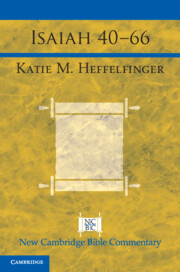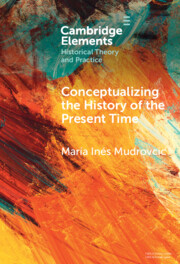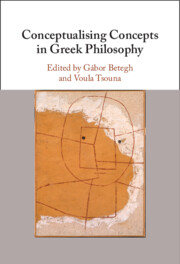1591 results
Chapter 27 - Disability in DOHaD and Epigenetics
- from Section 6 - Future Directions
-
-
- Book:
- The Handbook of DOHaD and Society
- Print publication:
- 27 June 2024, pp 300-311
-
- Chapter
-
- You have access
- Open access
- HTML
- Export citation
Chapter 5 - MicroRNAs Shape the Machinery of Our Minds
-
- Book:
- Fine-Tuning Life
- Print publication:
- 27 June 2024, pp 108-139
-
- Chapter
- Export citation
Chapter 30 - Memory and the City
- from Part V - Crises and Resilience
-
-
- Book:
- Antioch on the Orontes
- Print publication:
- 06 June 2024, pp 489-506
-
- Chapter
- Export citation
Chapter 4 - Intelligence, Cognition, and Expertise
- from Part I - Transitions
-
- Book:
- Transition Expertise and Identity
- Published online:
- 30 May 2024
- Print publication:
- 06 June 2024, pp 37-56
-
- Chapter
- Export citation
Memory Scripts and Life History in the Shadow of Brazil's Dictatorship
-
- Journal:
- Journal of Latin American Studies , First View
- Published online by Cambridge University Press:
- 03 June 2024, pp. 1-25
-
- Article
-
- You have access
- Open access
- HTML
- Export citation
Chapter 22 - The Management of Neurocognitive Impairment in Mood Disorders
-
-
- Book:
- Clinical Textbook of Mood Disorders
- Published online:
- 16 May 2024
- Print publication:
- 23 May 2024, pp 222-236
-
- Chapter
- Export citation
Cannabidiol improves nonmotor symptoms, attenuates neuroinflammation and favors hippocampal newborn neuronal maturation in a rat model of Parkinsonism
-
- Journal:
- Acta Neuropsychiatrica / Accepted manuscript
- Published online by Cambridge University Press:
- 21 May 2024, pp. 1-30
-
- Article
- Export citation
Critical Forum: What is Critical Pakistan Studies?
-
- Journal:
- Critical Pakistan Studies ,
- Published online by Cambridge University Press:
- 20 May 2024, pp. 1-10
-
- Article
-
- You have access
- Open access
- HTML
- Export citation
Continuous Pasts, Arrested Futures: Memory, Fiction, and the Postcolonial Condition in Africa
-
- Journal:
- Cambridge Journal of Postcolonial Literary Inquiry , First View
- Published online by Cambridge University Press:
- 17 May 2024, pp. 1-8
-
- Article
-
- You have access
- Open access
- HTML
- Export citation
Chapter 18 - Emancipation: Twentieth-Century Female Writers, Journalists, and Activists
- from Part II - Critical Inroads
-
-
- Book:
- A History of Argentine Literature
- Published online:
- 09 May 2024
- Print publication:
- 16 May 2024, pp 272-285
-
- Chapter
- Export citation
Chapter 9 - 1980: Memory and the Novel
- from Part I - Literary Dates
-
-
- Book:
- A History of Argentine Literature
- Published online:
- 09 May 2024
- Print publication:
- 16 May 2024, pp 133-146
-
- Chapter
- Export citation
Chapter 1 - Pandemics and the Lesson of History
-
-
- Book:
- The Cambridge Companion to American Utopian Literature and Culture since 1945
- Published online:
- 09 May 2024
- Print publication:
- 16 May 2024, pp 23-40
-
- Chapter
- Export citation
Chapter 10 - The Insight Memory Advantage
- from IV - After Insight
-
-
- Book:
- The Emergence of Insight
- Published online:
- 02 May 2024
- Print publication:
- 09 May 2024, pp 199-220
-
- Chapter
- Export citation

Isaiah 40–66
-
- Published online:
- 04 May 2024
- Print publication:
- 09 May 2024
Continuous Pasts: Memory as Historicity
-
- Journal:
- Cambridge Journal of Postcolonial Literary Inquiry , First View
- Published online by Cambridge University Press:
- 03 May 2024, pp. 1-8
-
- Article
-
- You have access
- Open access
- HTML
- Export citation

Conceptualizing the History of the Present Time
-
- Published online:
- 03 May 2024
- Print publication:
- 30 May 2024
-
- Element
- Export citation
Chapter 1 - The Emergence of the Concept in Early Greek Philosophy
-
-
- Book:
- Conceptualising Concepts in Greek Philosophy
- Published online:
- 25 April 2024
- Print publication:
- 02 May 2024, pp 16-34
-
- Chapter
- Export citation
Chapter 8 - Aristotle on the Stages of Cognitive Development
-
-
- Book:
- Conceptualising Concepts in Greek Philosophy
- Published online:
- 25 April 2024
- Print publication:
- 02 May 2024, pp 178-202
-
- Chapter
- Export citation
Chapter 16 - Alexander of Aphrodisias on Concepts
-
-
- Book:
- Conceptualising Concepts in Greek Philosophy
- Published online:
- 25 April 2024
- Print publication:
- 02 May 2024, pp 368-383
-
- Chapter
- Export citation

Conceptualising Concepts in Greek Philosophy
-
- Published online:
- 25 April 2024
- Print publication:
- 02 May 2024



